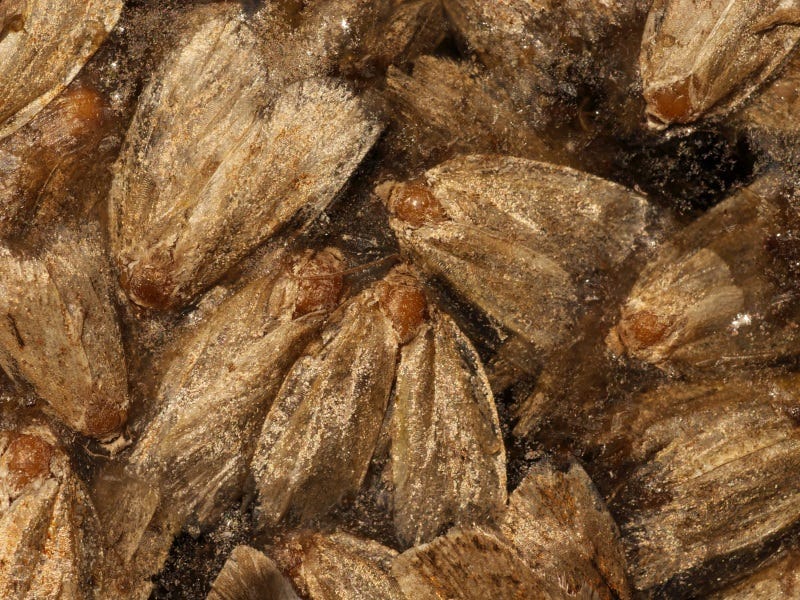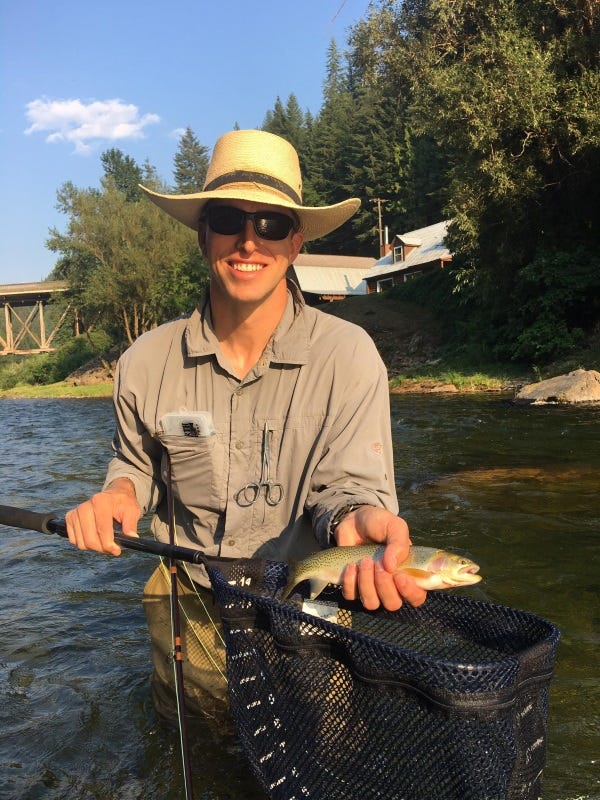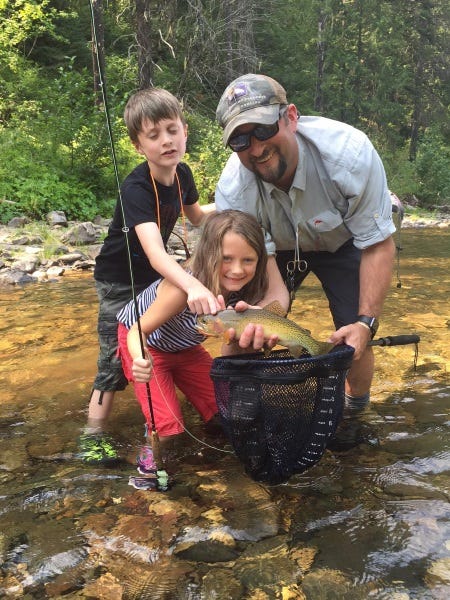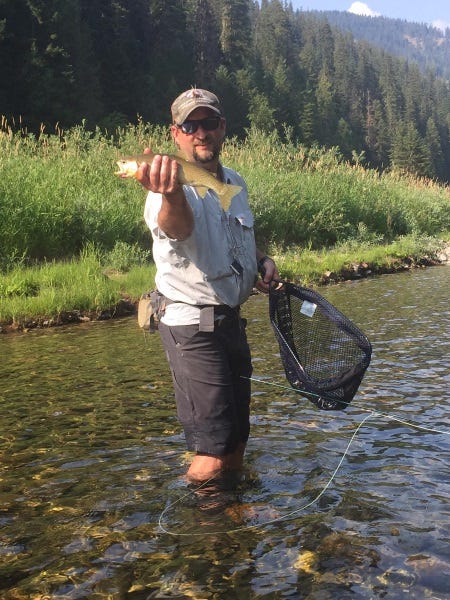Fly Fishing the Spruce Moth, Choristoneura Occidentalis


Spruce moths are a common bug in the northern Rockies, but it doesn’t get the credit it surely deserves.
I learned that a long time ago, during the first couple summers of my guiding career. I was on north Idaho’s upper St. Joe River, standing on my tailgate overlooking the river. I was tying on the same nymph rig that I had used for a week with good success. I would stand on the tailgate so I could get a better vantage point and look for rising fish. While doing so I noticed quite a few of these "butterfly-esque" moths, or what I thought to be small butterflies, up high in the pine trees and all seemed to have the same descending flight pattern.
I watched them slowly working their way down to the river with naive curiosity as I was witnessing something many other seasoned guides already secretly understood.

The first moth made its way down to a flat, glassy pool and got stuck in the water. As it drifted down a seam in the tailout, boom—a very aggressive trout ate it. Lightbulb! I quickly chewed off the boring nymph rig that was already rigged for my clients, and I got a confused look from both of them. I didn't say anything, I just dug through my box and found the biggest elk-hair caddis I could find and tied it on. We scrambled down to the pool and I told the guys so make the first cast count, adding, “Lets give it a twitch or two on the drift.” One of the clients made a great cast and on the second twitch, boom! The rest is history.
The next morning I was at the shop extra early. Steve, a fellow guide who had a couple seasons of guiding on me, was already in the shop. He’s typically a pretty quiet guy. I mentioned the spruce moth incident to Steve and he didn't really make eye contact with me, just kinda smirked and took a sip of his coffee and said with his back slightly turned to me "So you found the moths?"
I said, “Moths? Shoot I thought they were butterflies?”
He chuckled, and said, “Those are spruce moths.” I said, “Steve, can I tie you a few?”
He said, “Sure,” so I feverishly tied a half-dozen for myself and Steve, all #8 elk-hair caddis with a bit of white poly-wing under the elk hair.

These worked well, but I modified the pattern in the following days, creating something that looked like a large spent-wing spinner with a foam back and a palmered white hackle body. These worked really well when we “skittered” them on the surface.
In the next month of guiding and being in the shop I would ask some of the older guys and guides about this bug and they all would give me the "Hey kid, keep this one under your hat,” answer.
I still consider the spruce moth to have a sort of underground cult following that not a lot of the general fishing public seems to know about. If you are one of those who have not fished these flies, they are a must and should always have a place in your box. You’ll find these bugs in the trees and on the water in north Idaho and in many places in Montana, too.

So, in the years after my first experience with the "moth" I did notice a trend with it. It seemed to be more of an early morning event, as the sun warmed the tops of the tall pine and spruce trees where I believe a lot of the moths would either hatch or spend the evenings. They would take flight, but with all of the early morning dew in the air, it would be enough to cling to their wings and cause them to descend to the river. Once on the river they would "flutter" very similar to a big stonefly. And you know what happens when they do that.
We could catch fish throughout the day on these patterns, even though most of the actual moths disappeared by mid-day. These moths seem to show up in better numbers in late August on our Idaho streams and continue through October. In other areas they may be present as early as late July. Here in Idaho, whether you’re fishing the St. Joe, the Coeur d’ Alene, Kelly Creek, the Clearwater or any other forested trout stream, you’ll want to be prepared to match the moth. Feel free to stop by any of our North 40 fly shops and grab a few.
